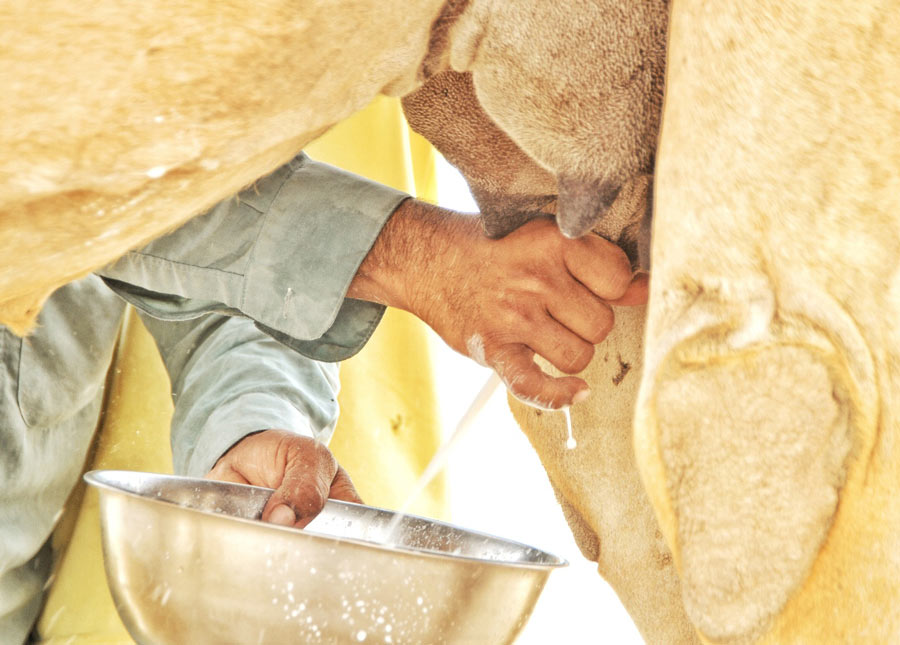Camel Milk, The Ancient Liquid Gold Superfood, is Rising in Demand
A U.S. farm is struggling to supply rising demand for bottles of their ancient nomadic survival juice - camel milk. But at $12-$16 a pint, consumers pockets are getting humped.
Ancient nomadic and pastoral cultures drank camel for milk for thousands of years. Herders sometimes lived only on camel milk for several weeks at a time when the animals were grazing on distant deserts and arid environments. Now, a farm in far-eastern Colorado, eight miles from the Nebraska border, has revitalized interest in this ancient liquid superfood.
You Have To Get Personal With Every Camel
Using a species of camel well-adapted to arid regions, camel dairy farming is an environmentally friendly alternative to cow dairy farming. Differing nutritionally from cow milk, camel milk is higher in antioxidants and has low levels of sugar and saturated fat.
Dairy farmer Kyle Hendrix runs a farm called ‘Camelot,’ a clever play on the animals name with the name of King Arthur’s castle. He recently told Fox8Live that his family business produces milk from their caravan of camels: one of only two licensed camel dairies in the United States.
Hendrix explained that he has to get “on a personal level with each camel,” and that he tries to “work with their personalities.” So emotionally sensitive is the camel that each one has to be milked with her calf present. “It’s quite a process, and you only have about 90 seconds to harvest the milk,” Hendrix explained.
Each camel has four teats, and the lactation period is 14-16 months. The amount of daily milk production averages 5 kg per animal; although the fittest animals can yield as much as 15–20 kg per day. However, Kyle Hendrix says Camelot currently struggles to fulfil the current high demand for camel’s milk and that the farm sells every pint it produces, every day.
- Donkey milk: Ancient elixir of life experiences modern-day resurgence
- Should Adults Really Be Drinking Milk? Studying Neolithic Ancestors Suggests Not

A nomadic herder preparing to milk his camel. Source: georgeoprea9 / Adobe Stock
Nutritionally, Camel Milk Is Liquid Gold
India’s National Research Centre on Camels, says that camel milk is lower in cholesterol and sugar, and enriched with protective proteins. With its immune factors and growth promoters, camel’s milk is the closest milk substitute to human breast milk, and it’s loaded with nutrient-rich colostrum, also known as “first milk.” This is why camel milk could fulfill the nutritional requirements of nomadic people for extended periods without food.
Compared to the milk fat of cow, buffalo and ewe milk, camel milk contains higher amounts of multi-benefit linoleic acid. In addition, 120 strains of lactic acid bacteria (LAB) present in camel milk help the gut to regulate bowel function. It also has powerful probiotic properties.
However, perhaps the reigning monarch among all the nutritional properties of camel’s milk is that it doesn’t contain the protein β-lactoglobulin that irritates lactose intolerant people. With almost no β-lactoglobulin present, camel’s milk can be safely digested by those unable to break down this complex sugar that is present in almost all other animal milk.
Financially Too, Camel Milk Is Liquid Gold
While camel milk is arguably one of the most nutritious foods out there, it really is expensive. Fox reported that one pint sells in the U.S. for between $12-$16. Today, camel milk represents around 3 percent of the $360-billion global dairy market.
Market research company Technavio said the camel milk industry is rising exponentially - 6.8 percent each year between 2018 and 2022. The report also stated that the emerging camel milk market, which was valued at $10.81 billion in 2017, will “balloon to $15.05 billion in the next three years.”
A recent IMARK group study explained to the stock market that the price of camel milk is significantly higher compared to traditional cow milk, “owing to the fact that camel milk production is lower than cow milk, and camel breeding costs are also higher compared to that of cows.” However, even at $12-$16 per pint on today’s market, the report concluded that camel milk’s immense health benefits “significantly outweigh the higher prices”.
Top image: Man in the desert extracting camel milk. Source: padraic spencer/EyeEm / Adobe Stock
By Ashley Cowie



















